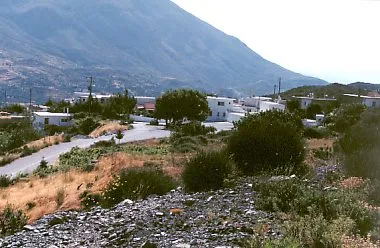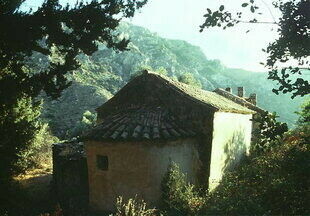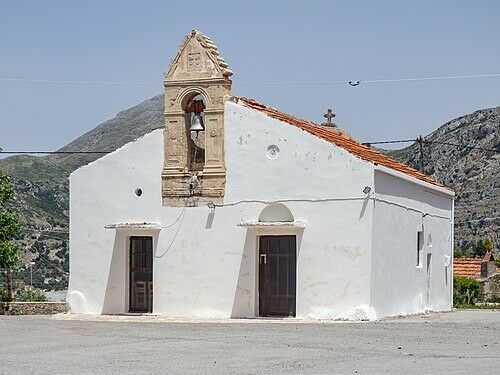"Discover the allure of Mourne! Immerse yourself in history, explore ancient churches like Agia Eirini and Agios Georgios, and experience the unique charm of this village."
Mourne is a village and the seat of the homonymous community in the Municipality of Agios Vasilios, in the Regional Unit of Rethymno, Crete. It is located 34 kilometers from Rethymno and 4 kilometers from Spili. Situated at an altitude of 500 meters, it is nestled in a small shallow valley. The name of the village is derived from the mulberry tree.
The village is mentioned by Francesco Barozzi in 1577 as Murnea in the province of Agios Vasilios. In the Venetian census of 1583 by Kastrofylakas, it is referred to as Murnea with 121 inhabitants and 18 owed corvées, while Vasilicata also mentions the village in 1630, with the name Murnea. In the Ottoman census of 1659, it is recorded as Murnye, with 22 houses.
Other settlements in the area are also mentioned in the Venetian censuses, but they have since been abandoned. These include Hantaki, Mauriki, Laga, Lakko, Diprochori, and Epizygos. Lakko and Diprochori continued to be inhabited during the Ottoman rule, last mentioned in the census of 1928.
In the census of 1881, Murne belonged to the municipality of Lampa and had a purely Christian population of 380 inhabitants. In the census of 1900, it had 462 inhabitants and belonged to the same municipality. In the census of 1920, it was designated as the seat of a homonymous male municipality.
In 1925, Murne was designated as the seat of a homonymous community until the Kapodistrian administrative division, when the village was annexed to the municipality of Lampa. Within the village, you can find the churches of Agia Eirini and Agios Georgios, both adorned with frescoes, located in the cemetery.
For the visitor:
Panagia in Dentrika This is the name of a location outside the village, named for its many trees. In the past, there was a small settlement here. An old Byzantine church dedicated to Panagia, adorned with unique frescoes, is located here.
Panagia in Diplochori A temple with unique Byzantine frescoes. On an embedded slab above the entrance, it is noted that it was constructed in 1417 by someone named LEONTAKIS TROULINOS.
Agia Paraskevi An external chapel of the village with a panoramic view of the plains of Koxare.
Alatspetra The village's location overlooking the Libyan Sea, with unique landscape variations.
Agios Giorgis Rigologos This area is situated on a hill, 800 meters west of the village, between Mourné and Epizygos. It took its name from the chapel of Agios Giorgis Rigolos.
Agios Vlassis In the area of Lakkos, where the old village of Mourné once existed, there was a church named Vlassis, of Byzantine and later Venetian style. The villagers knew of its precious golden bell. Fearing it would be taken by the Turks, they hid it, hoping to recover it once the village was liberated. However, as the years passed, those who buried the bell died, and it is yet to be found.
A girl woke up one morning and recounted to her mother the dream she had the previous night. She saw an old man who told her that the bell of Agios Vlassis is buried in a field in Upper Lakkos. He said she would dream again before she got married, showing her the exact location. However, the girl got married, and the old man never appeared in her dreams again. Many people who own land around the church have searched, but their efforts have been in vain.



